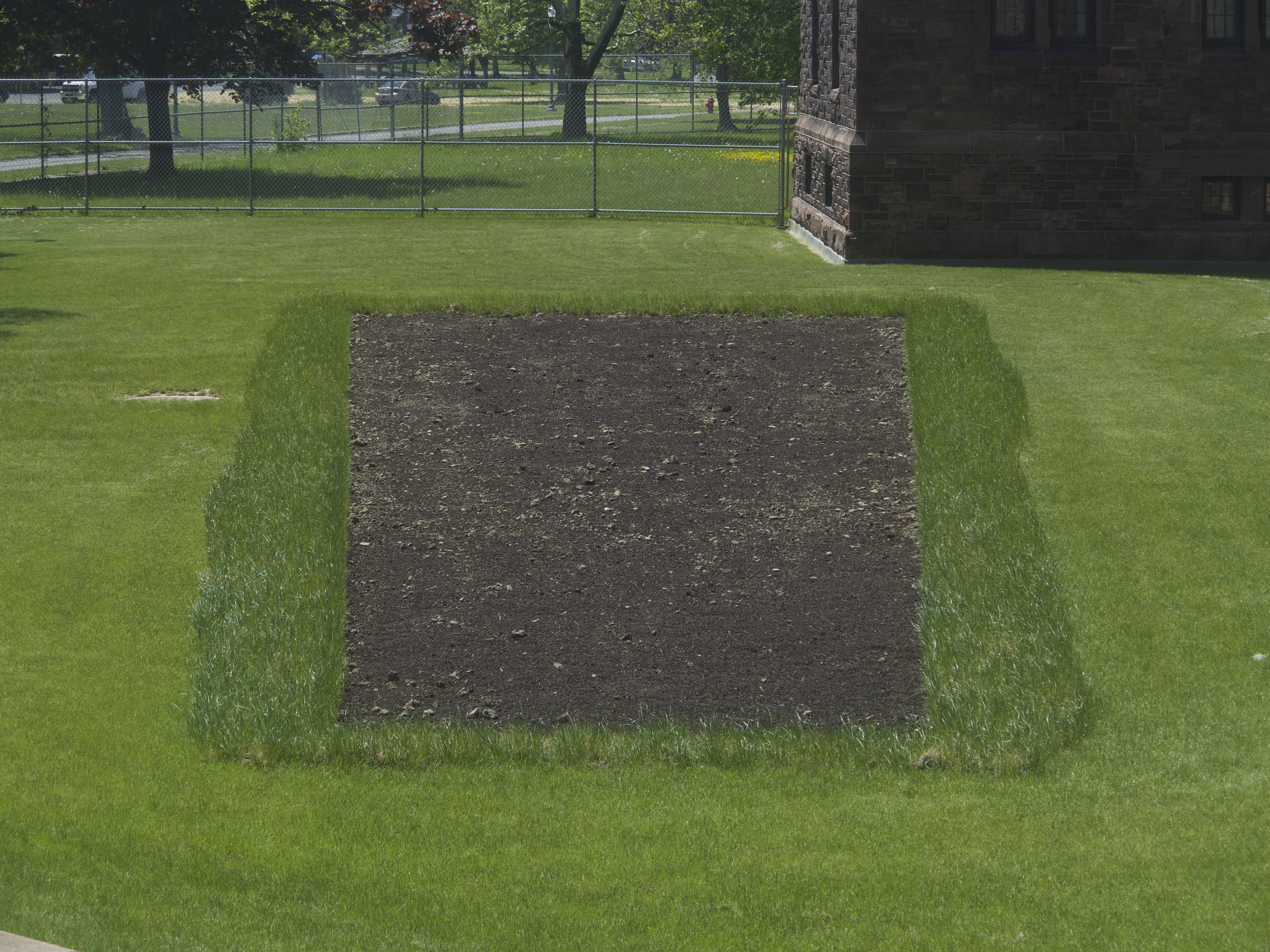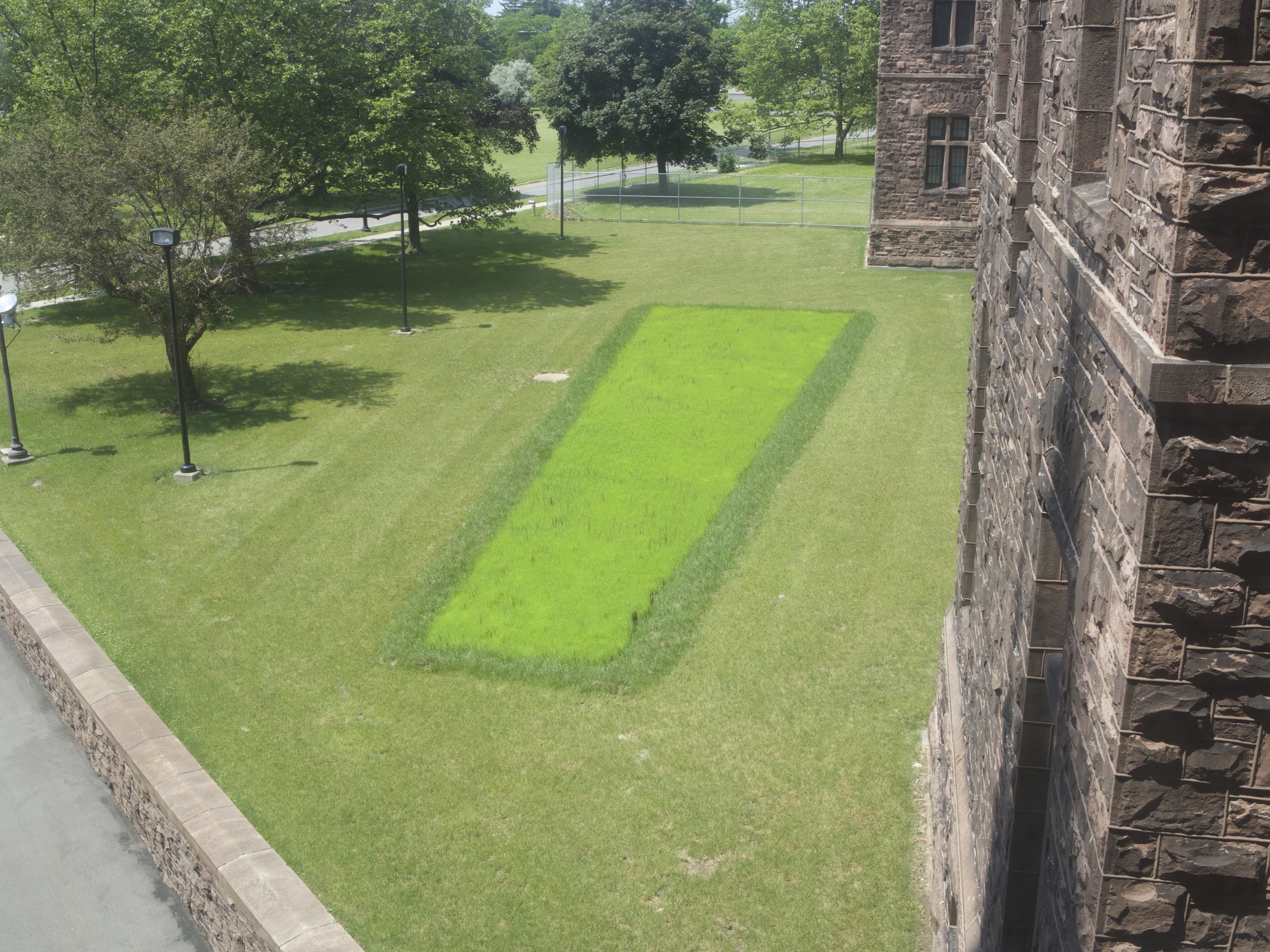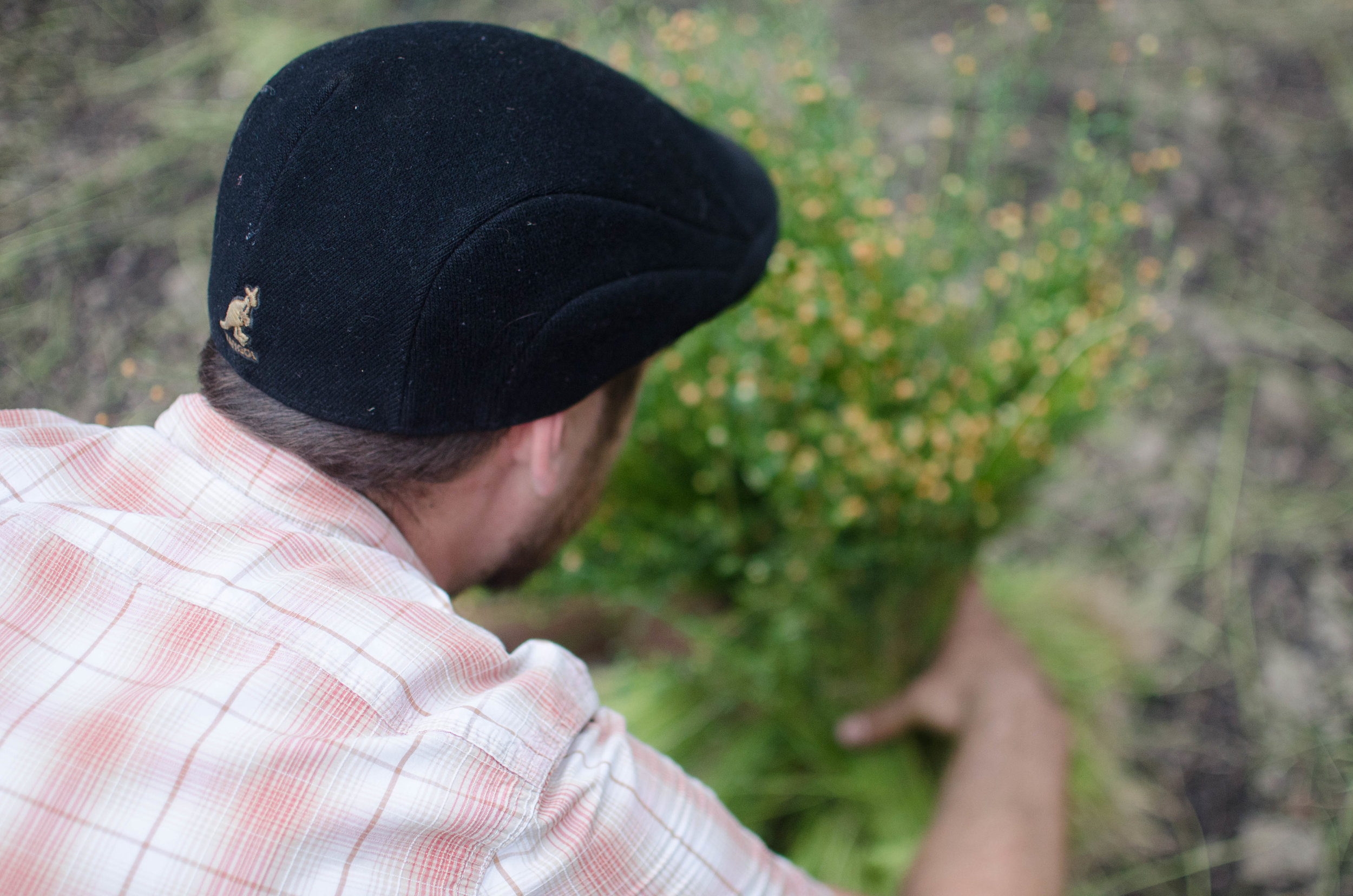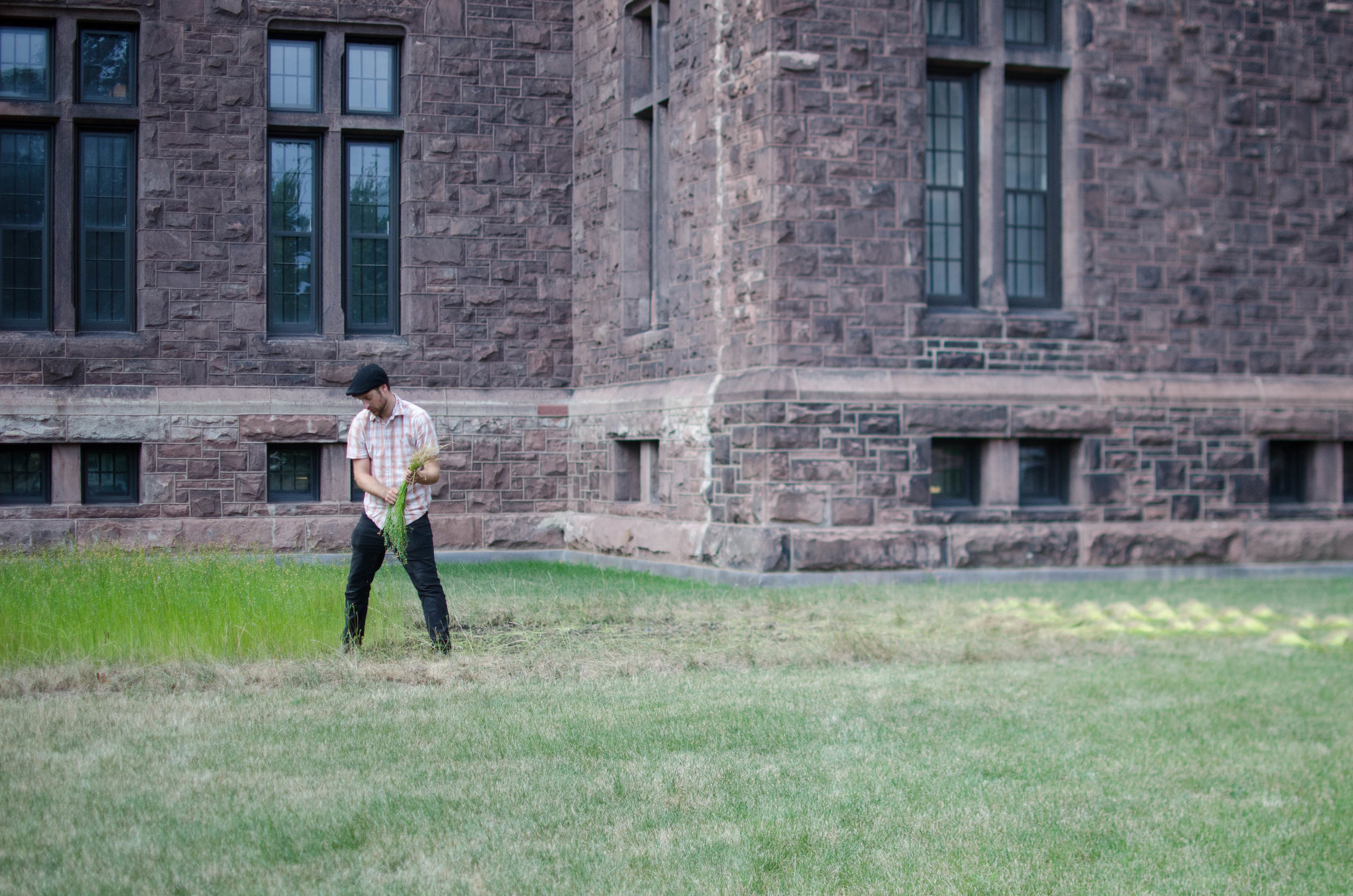Drawing A Blank (2019)
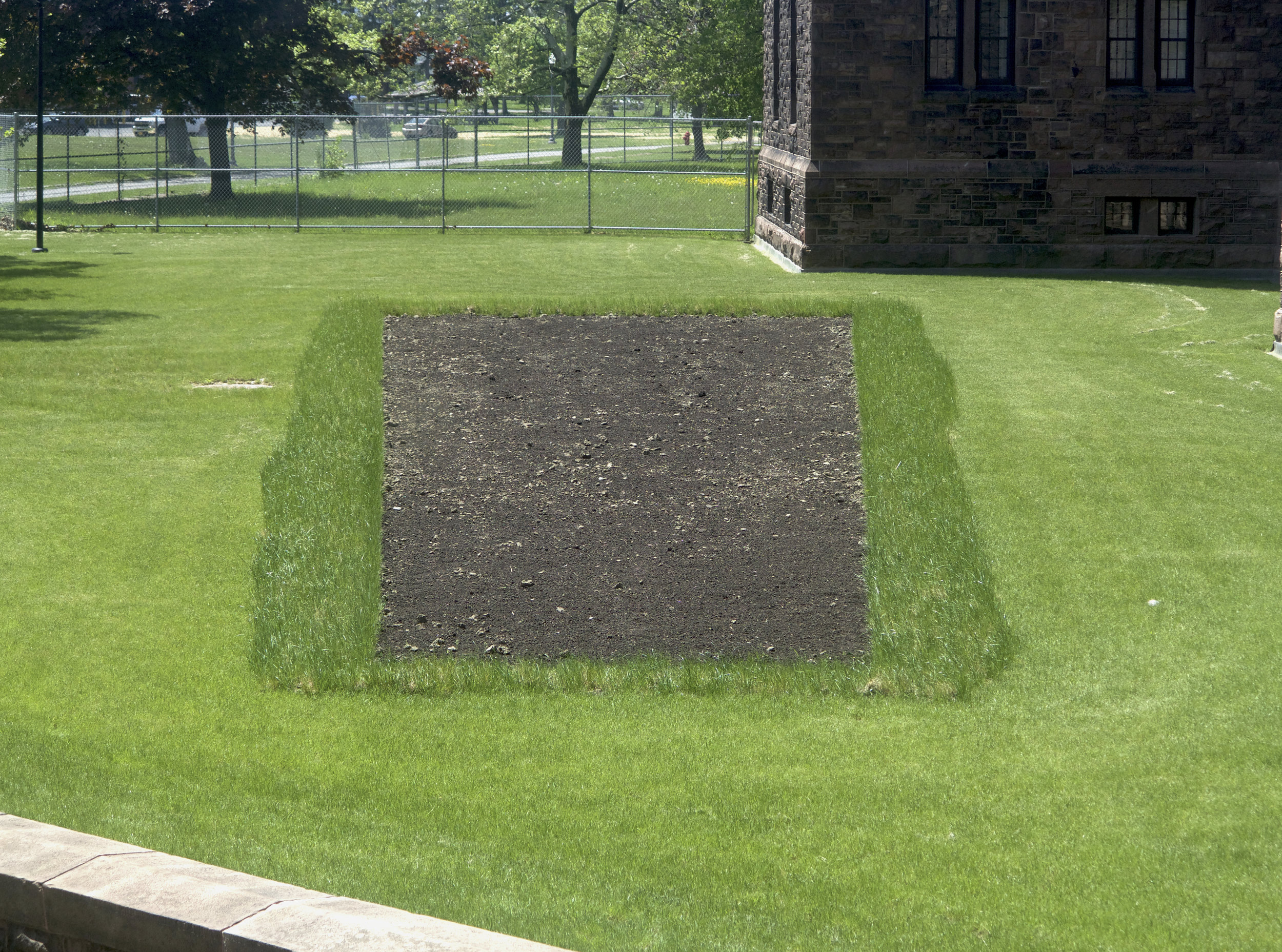
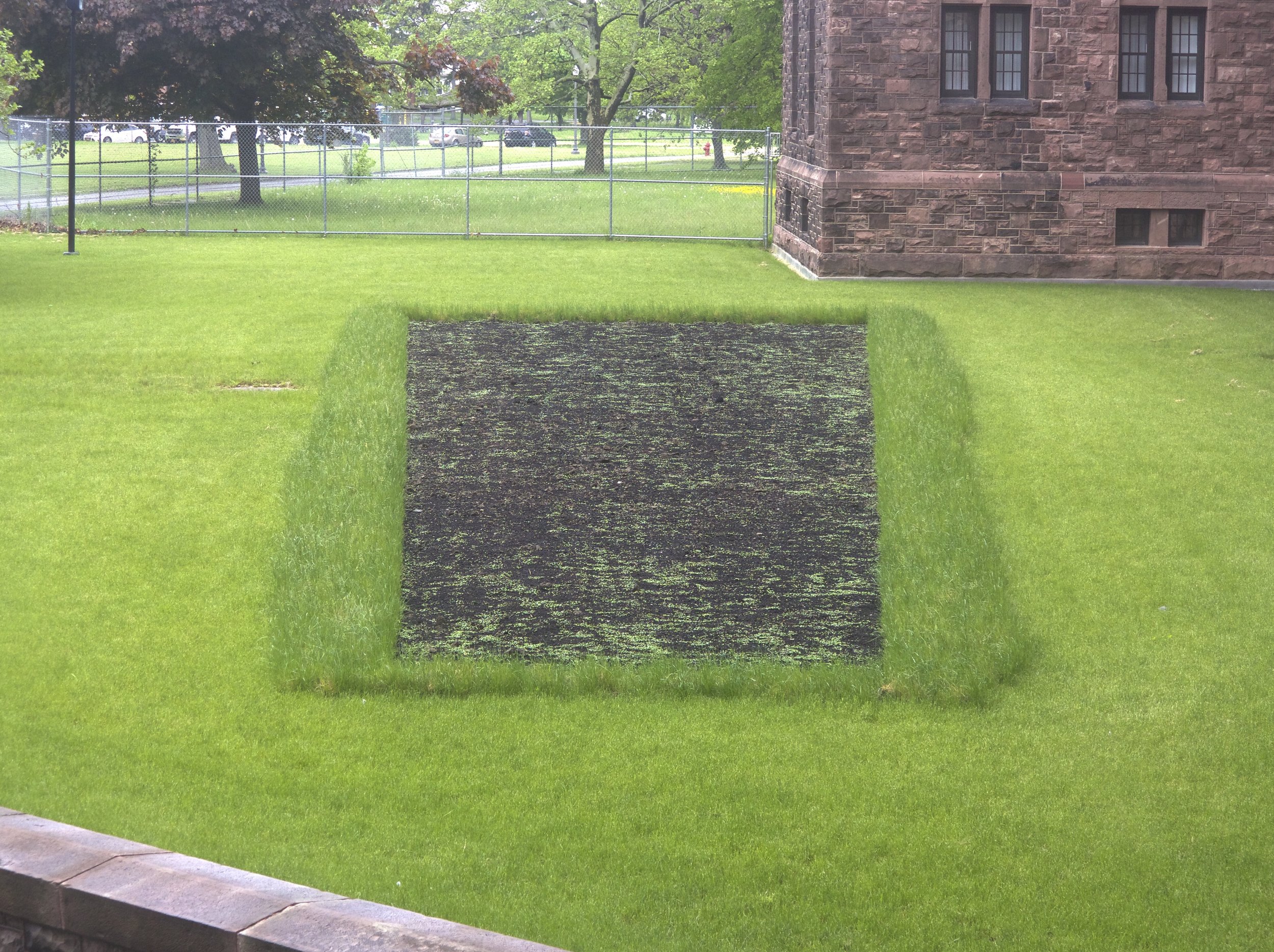
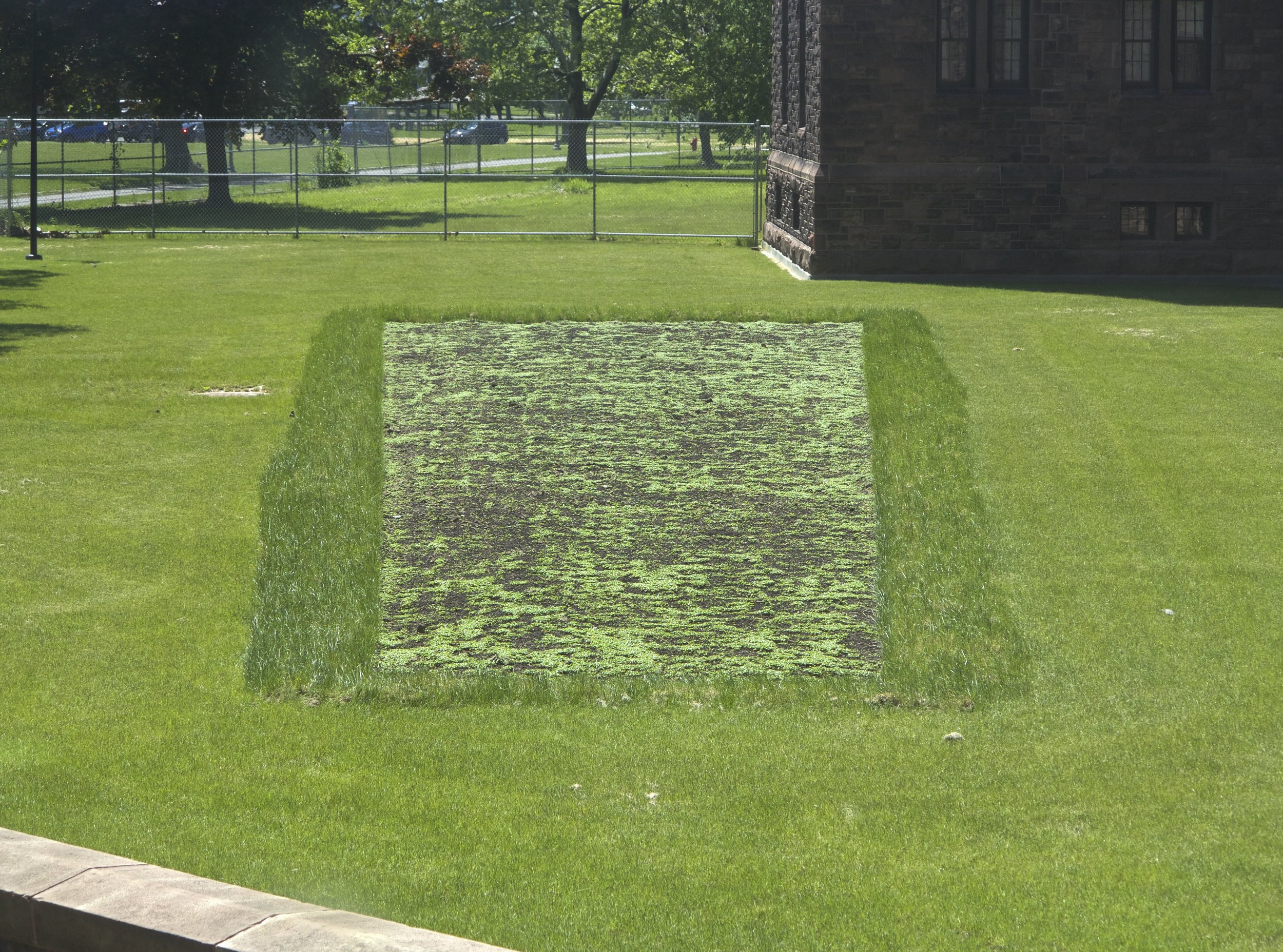
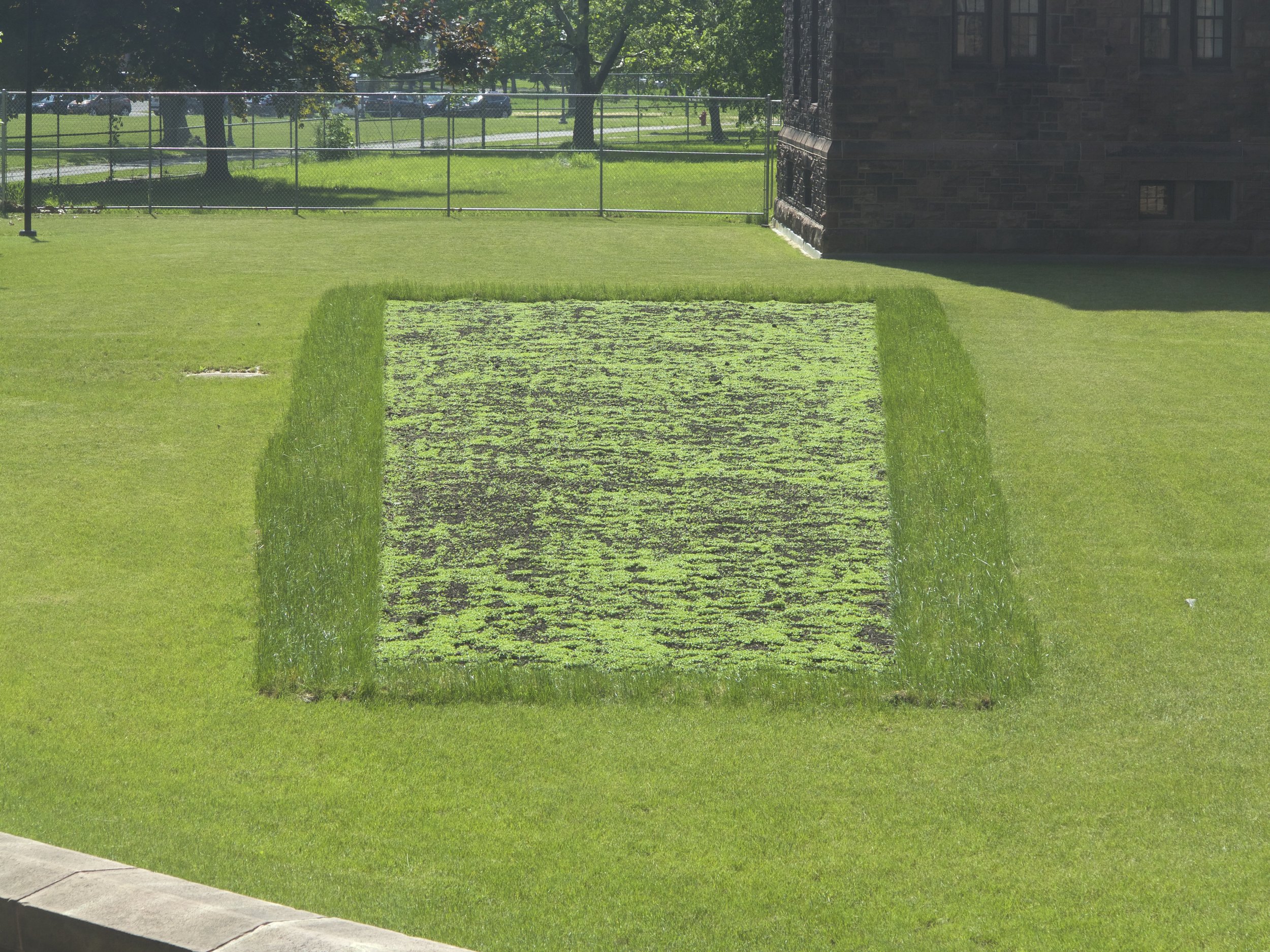
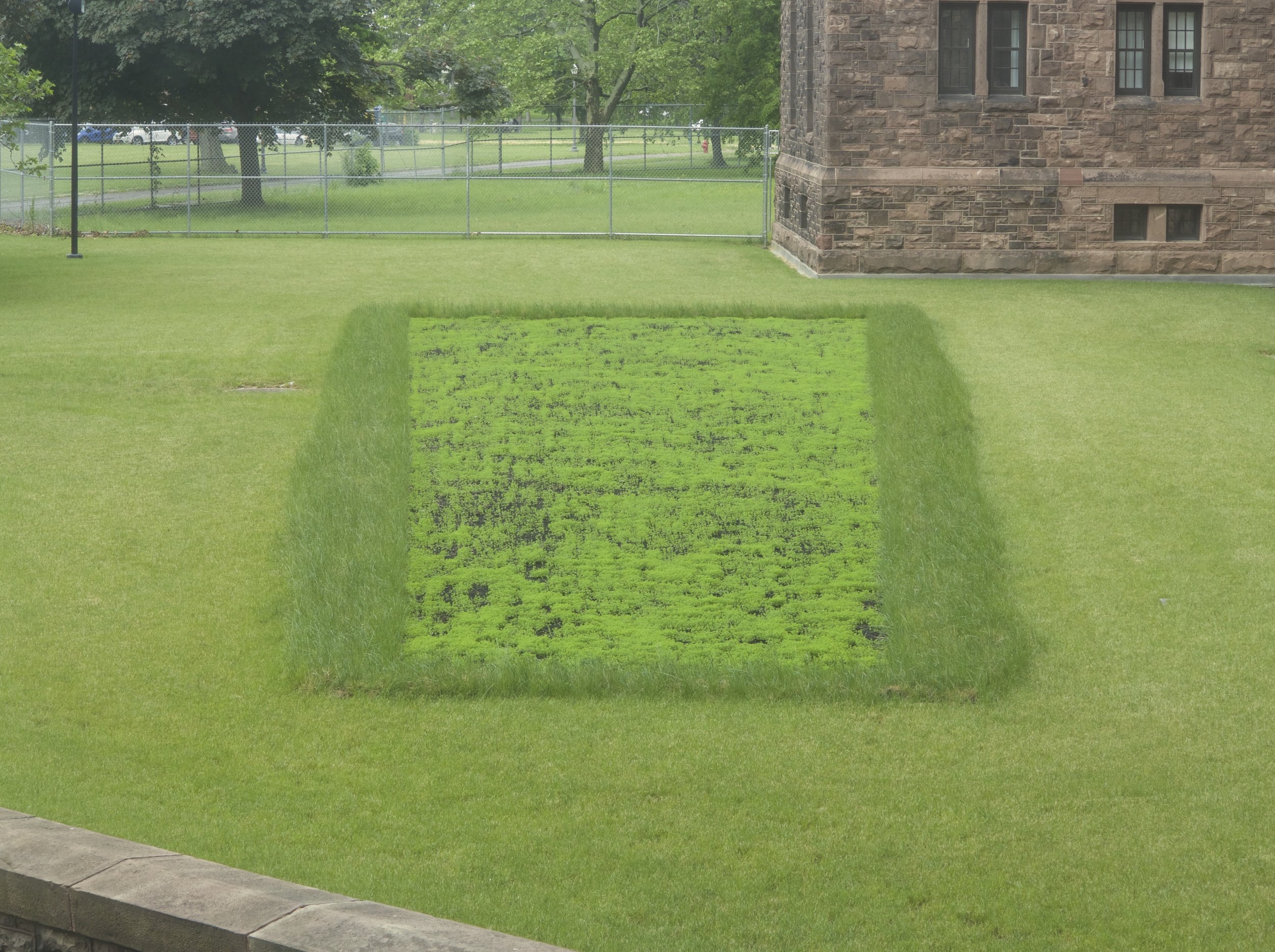
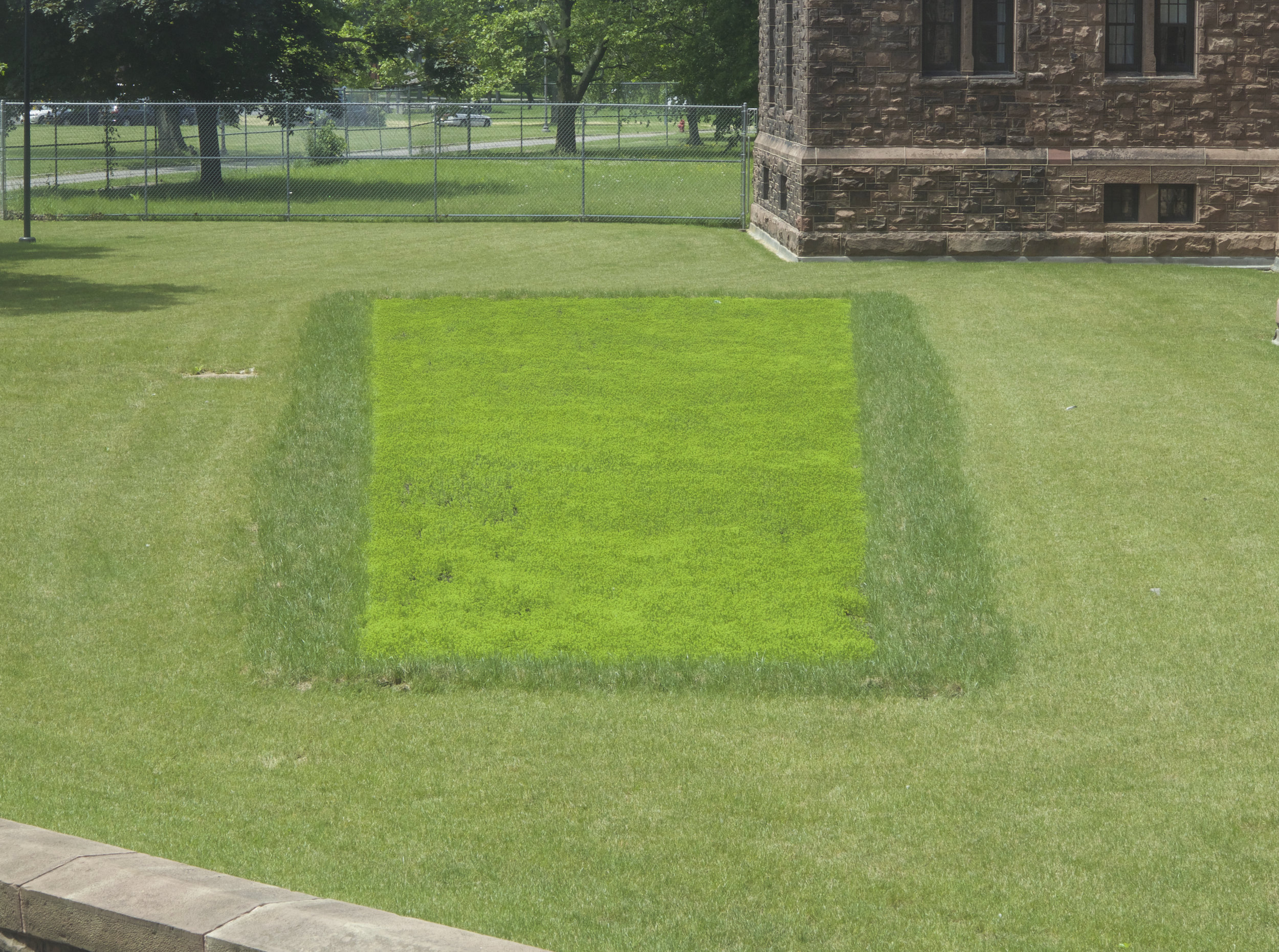
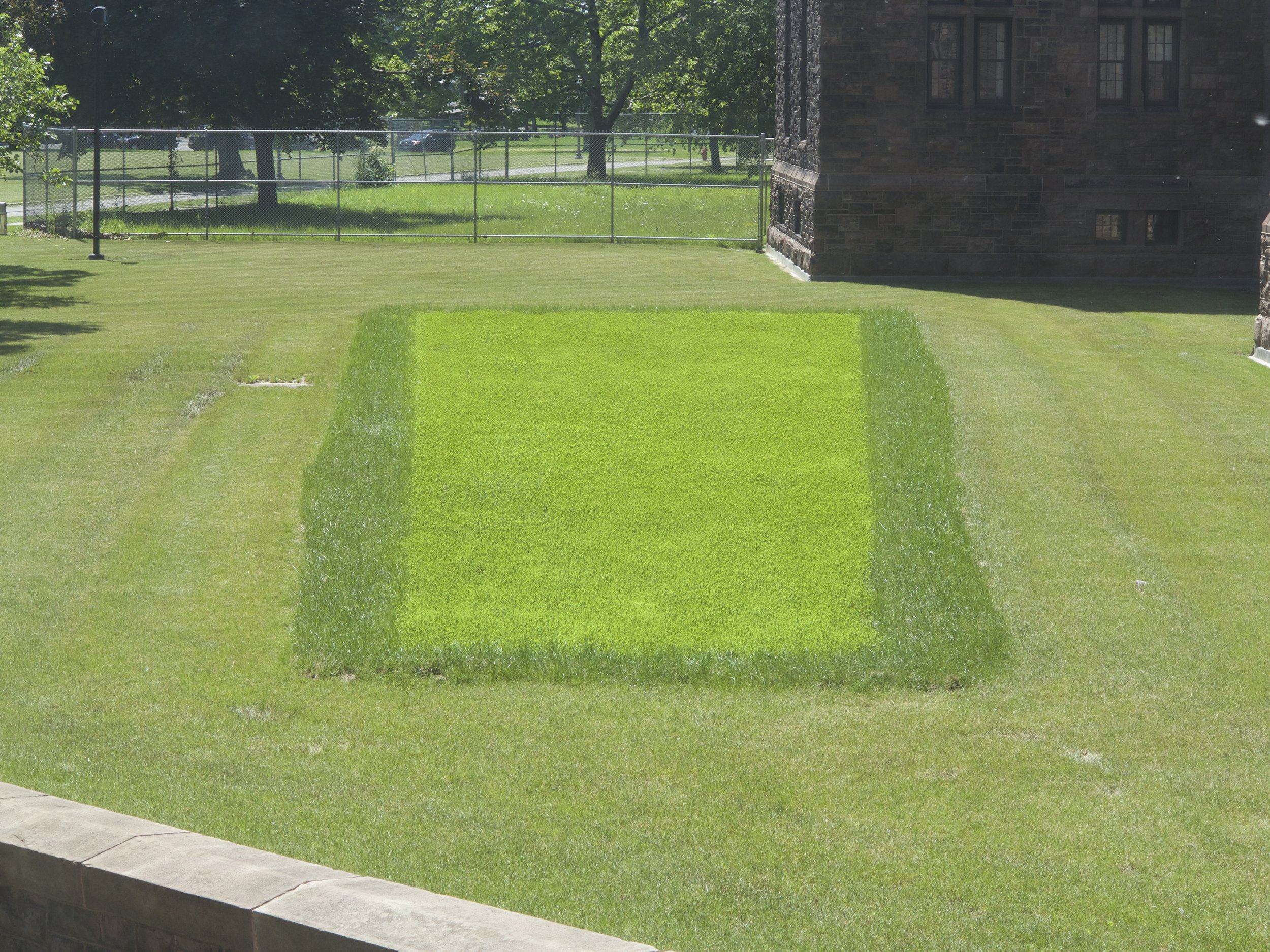
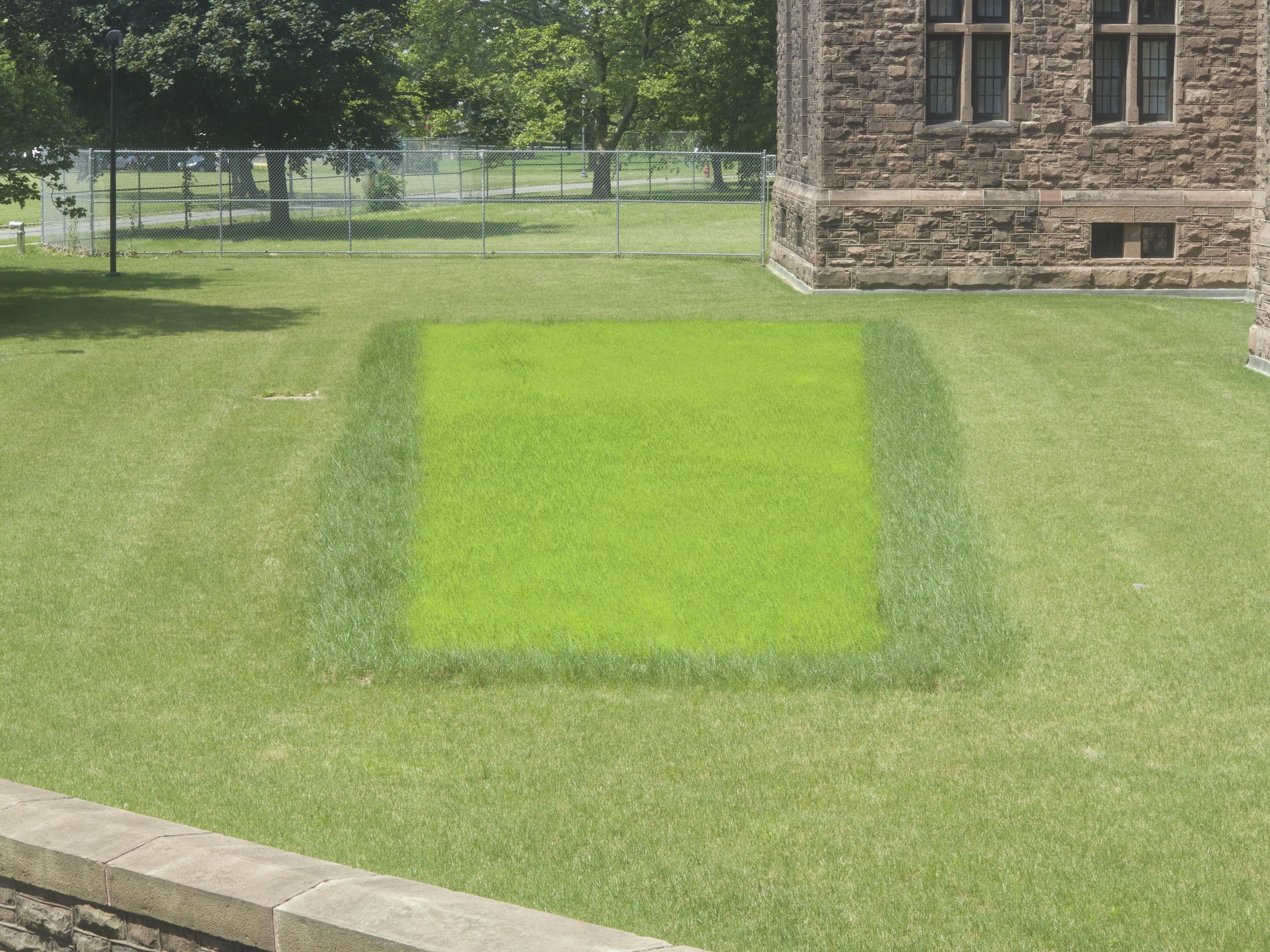
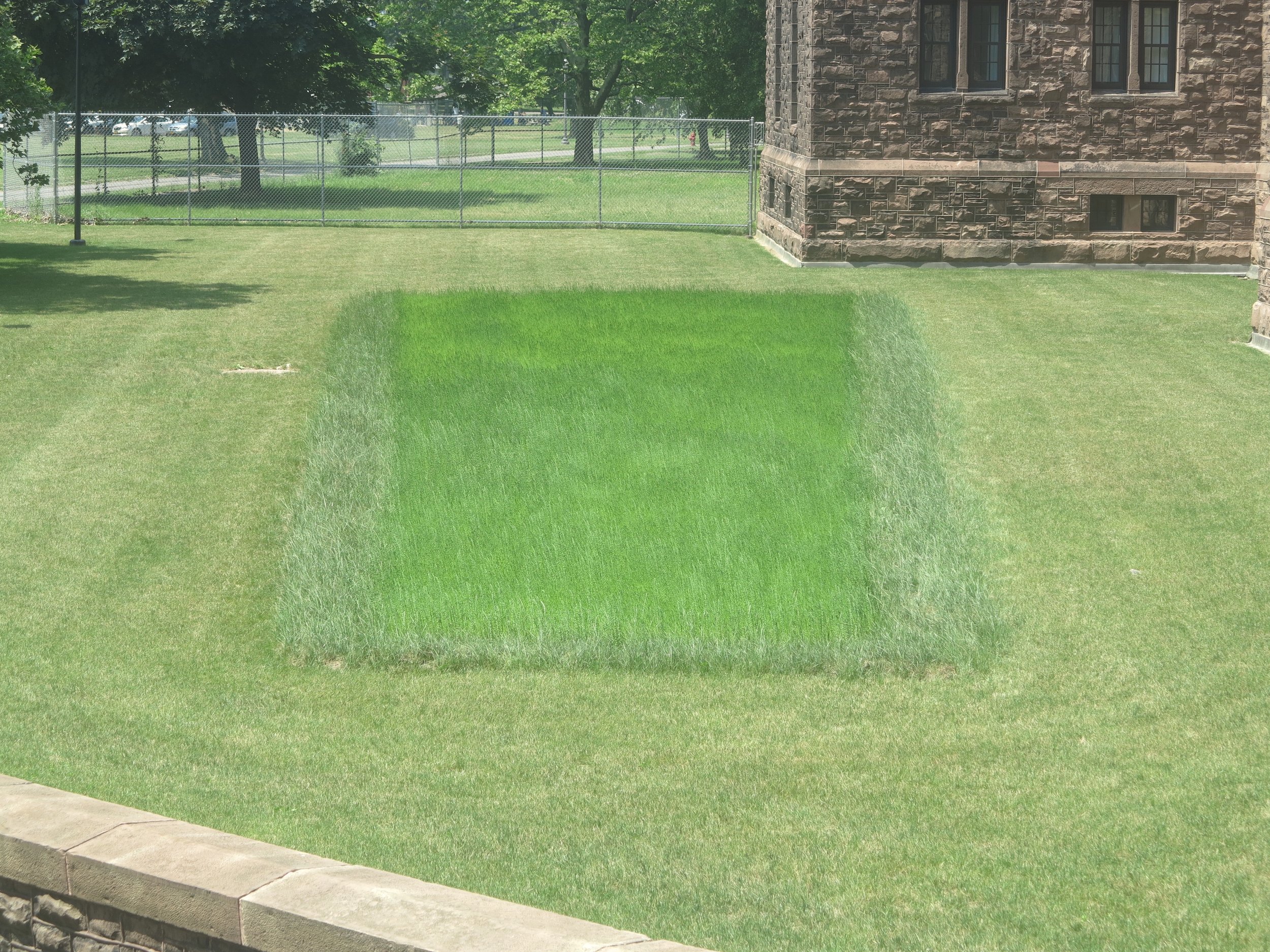
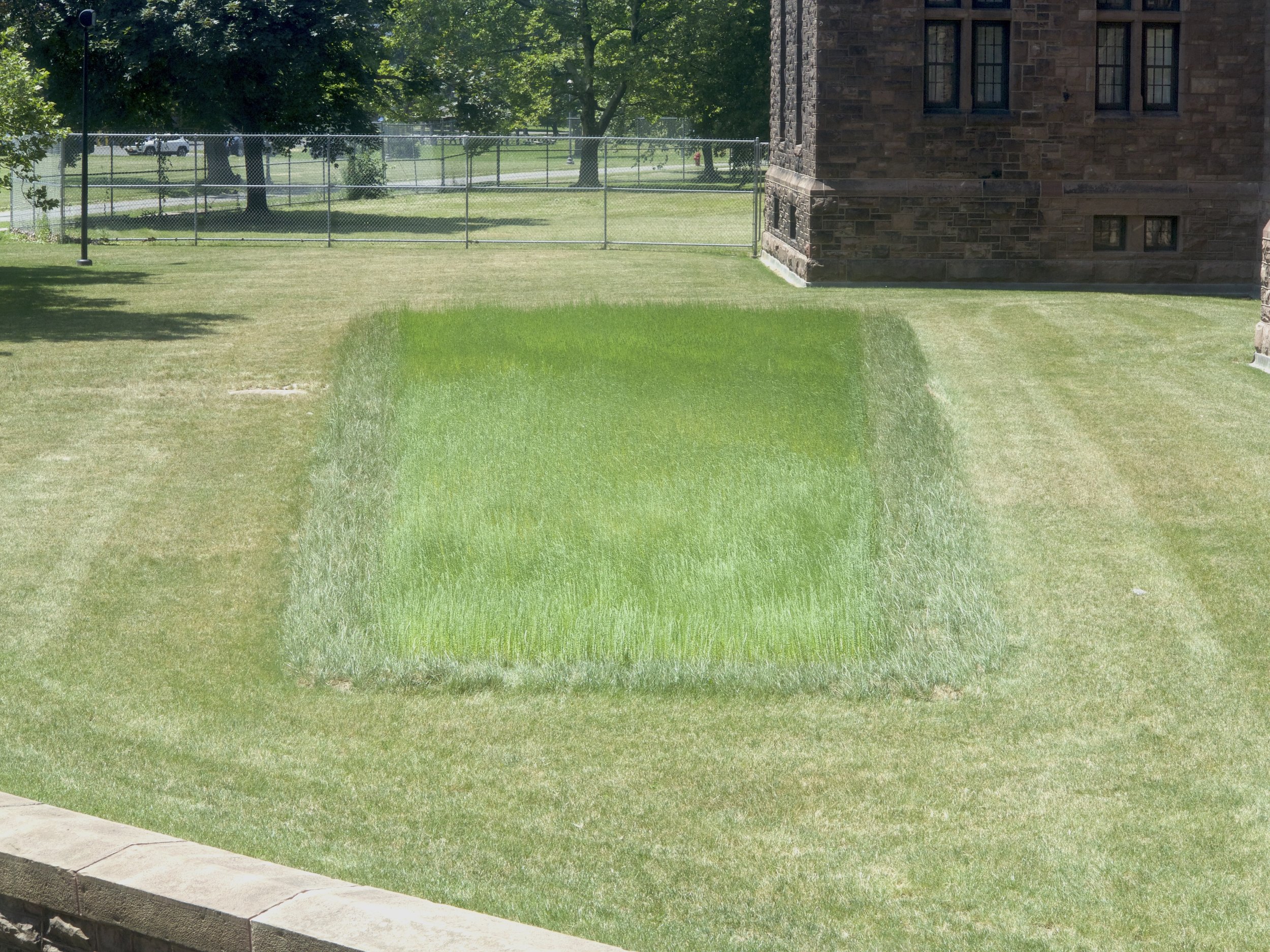
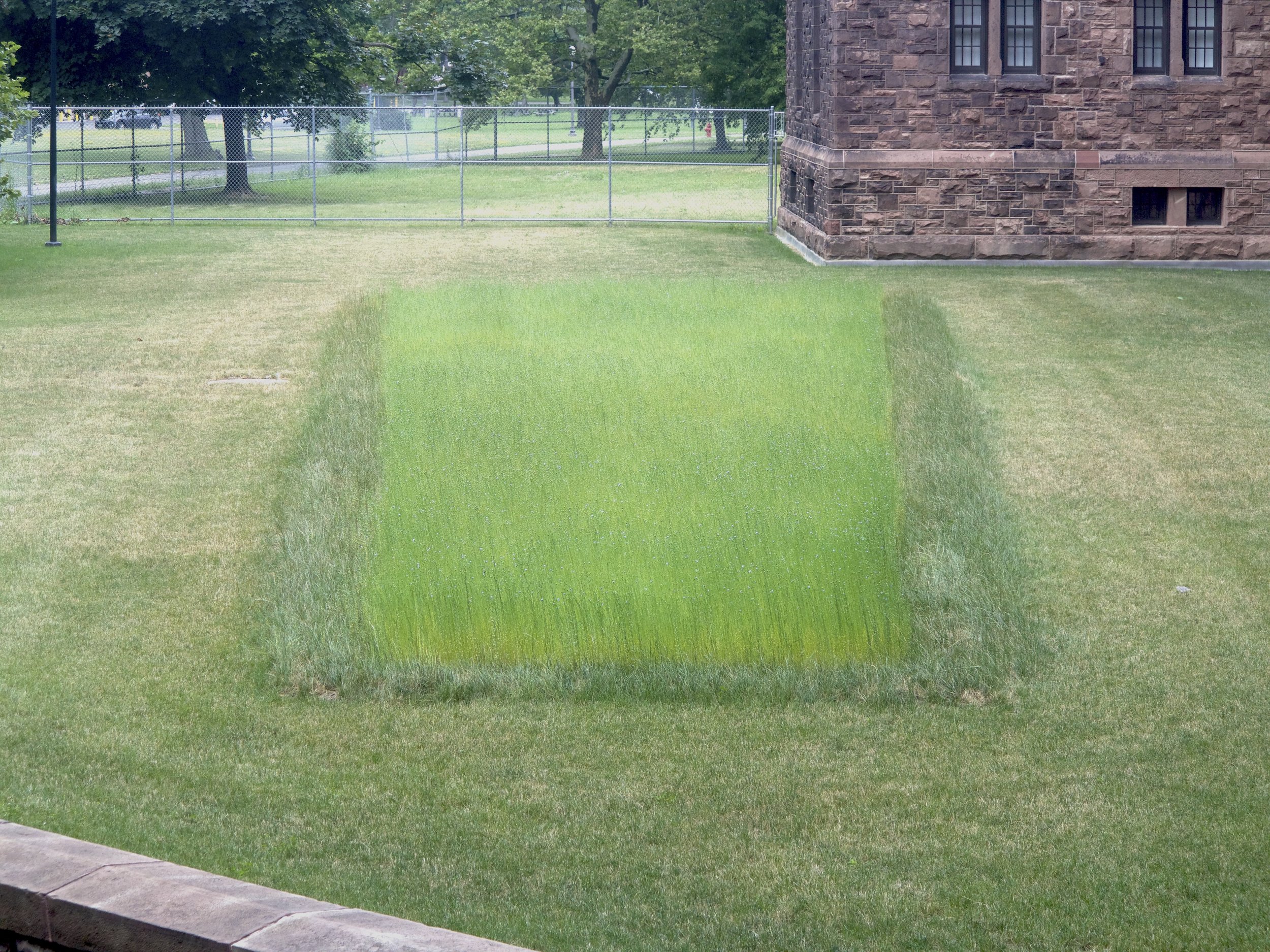
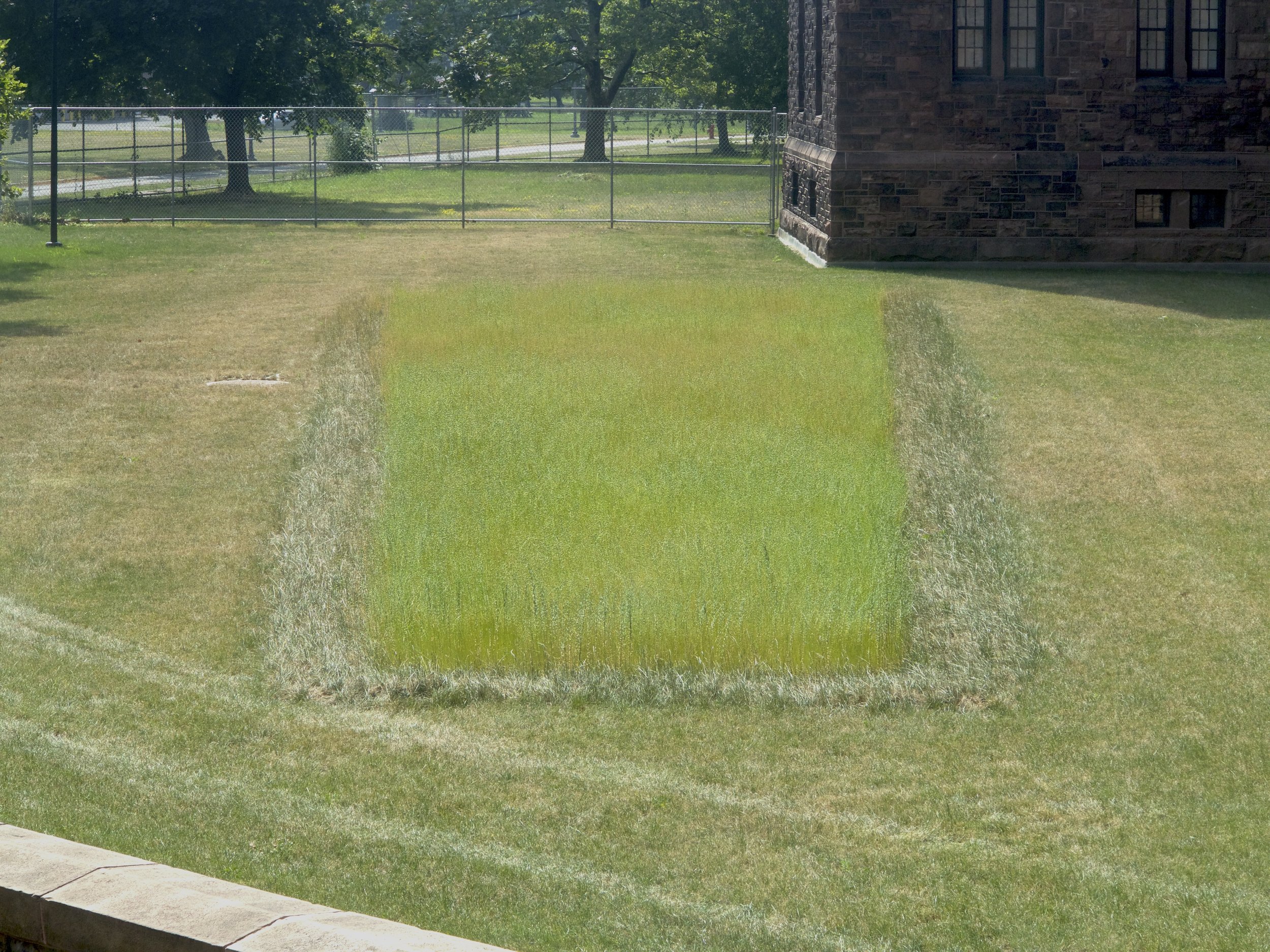
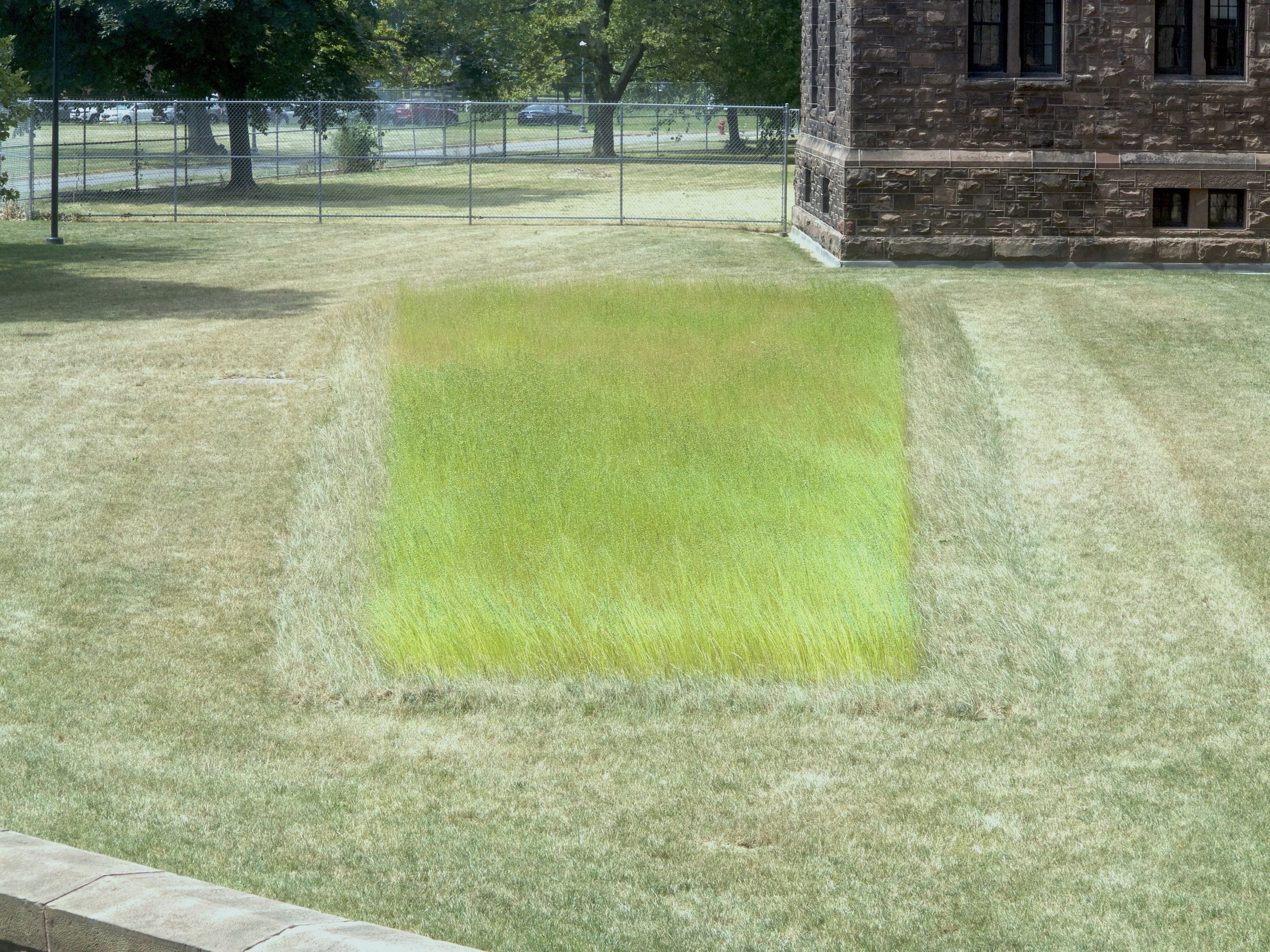
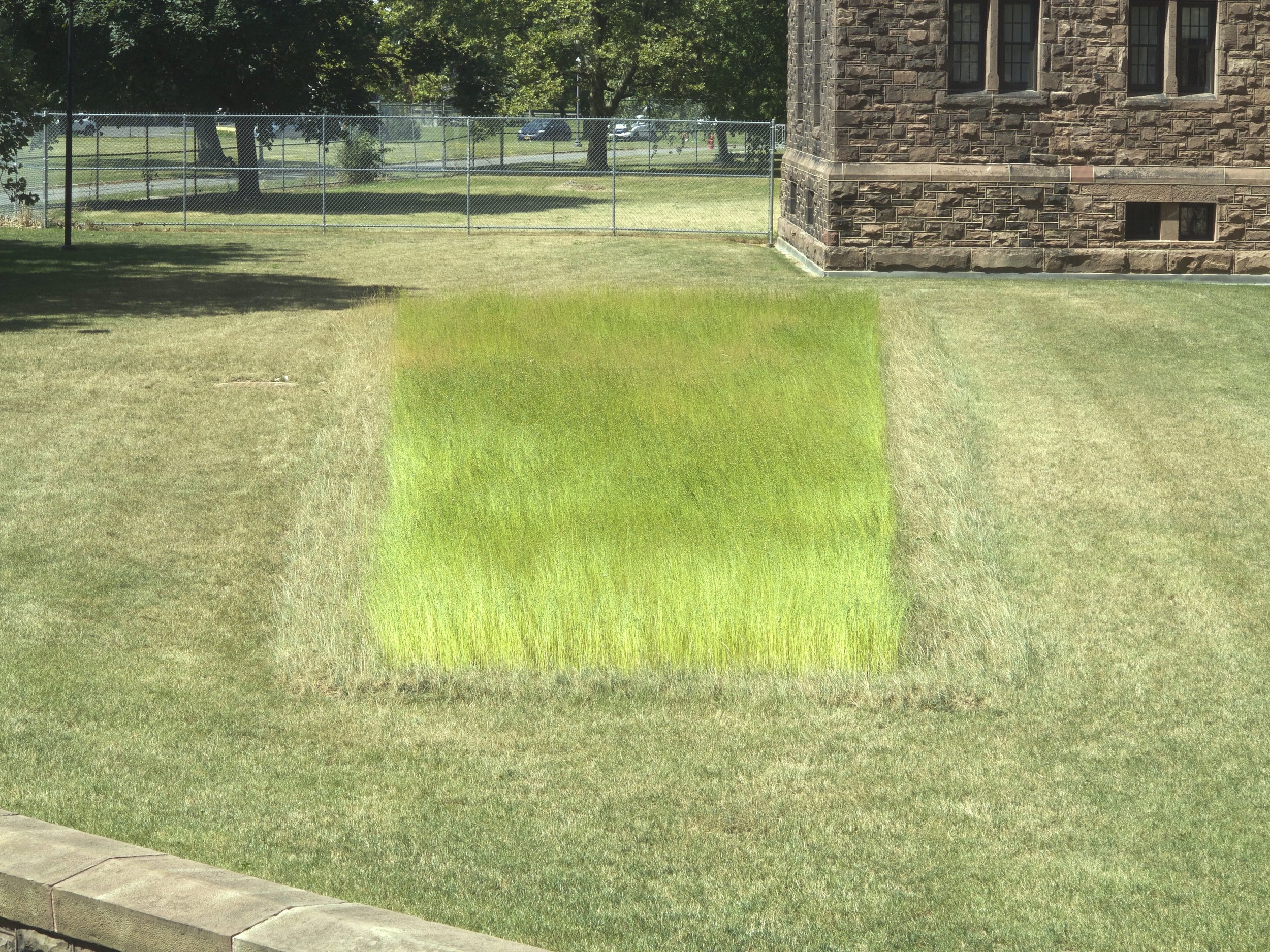
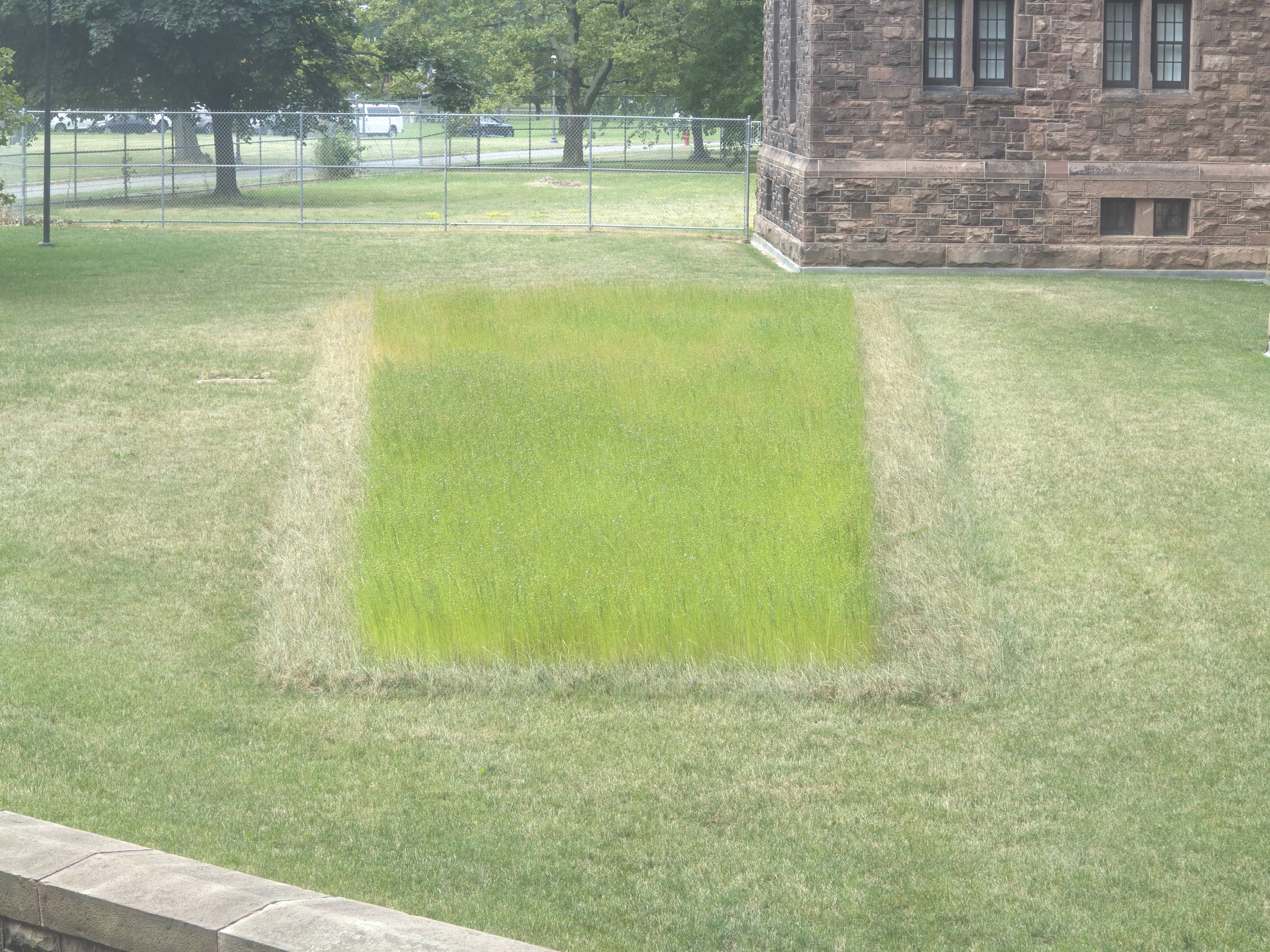
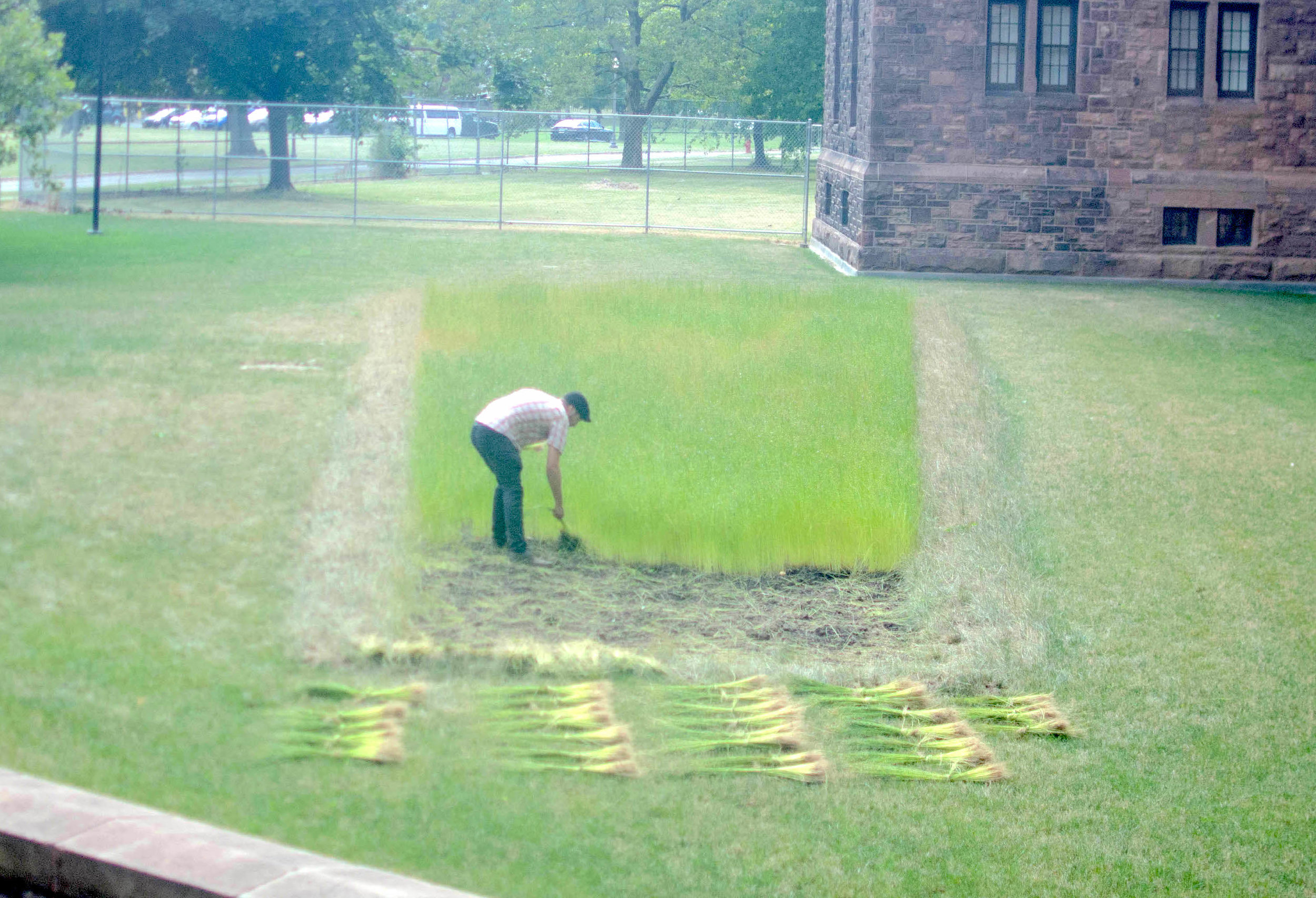


Located adjacent to the west wing of the main building of the Richardson Olmsted Campus in Buffalo, NY, is a land-based work of art titled Drawing A Blank. The artwork is a garden plot in the shape of a trapezoid, that appears to be a rectangle, when viewed through a camera from a marked interior viewpoint. If one disregards the perspective of the camera, the illusion vanishes and the plot once again appears to be a trapezoid.
During year one, Drawing A Blank was seeded with flax (Linum usitatissimum), the plant traditionally grown in Europe and North America for the production of artist paper and canvas. The intention behind planting Drawing A Blank with flax was to symbolically transform the garden plot into a deconstructed blank canvas, a living painting, something connected to the history of the Western art tradition through being a physical embodiment of that tradition’s material base.
At the conclusion of the first growing season the flax was harvested and processed into various art supplies which were then used to create a series of two-dimensional artworks that reflect upon the optical mutability of the land-based artwork Drawing A Blank. This series of work, entitled Slow Art: The Drawing A Blank Nonsites, was scheduled to be shown at Mirabo Press in Buffalo, NY during the Spring of 2020. In response to the Covid 19 pandemic the exhibition of these works was indefinitely postponed. For a detailed account of this part of the project please visit https://indd.adobe.com/view/3afa1a64-8fb3-4c7f-981f-f6ef5c389da7
During subsequent years, Drawing A Blank continued to exist in a slightly altered form. No longer planted with flax, the fallow garden plot became a refuge for native plants and pollinators. Though the plants growing within Drawing A Blank are no longer intentionally tied to the history of art, Drawing a Blank’s anamorphic structure continues to call into question how context and photographic framing have the potential to influence one’s perception of a garden plot as a work of art.


